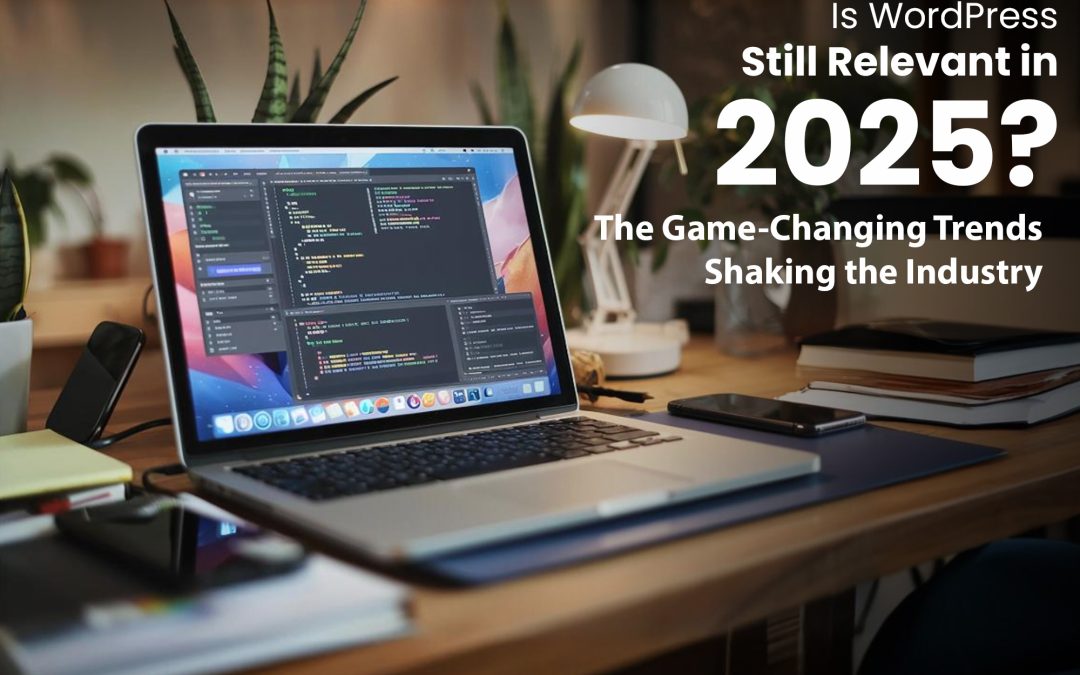This blog sparks curiosity by addressing the controversy around WordPress’s relevance in 2025. It starts by discussing criticisms like the rise of AI builders and headless CMS solutions but transitions into showcasing how WordPress is evolving to meet modern demands. We highlight its adaptability with trends like block-based design, AI integration, advanced performance optimization, and compatibility with headless architectures. In the end emphasizing why WordPress, with its vast ecosystem and community support, remains the most reliable and future-proof platform for businesses of all sizes.
AI Content and Design Automation
Artificial intelligence is ruling content creation and website design. WordPress is at the front line of this transformation. AI-powered tools are now capable of generating high-quality content, analyzing user data to enhance SEO strategies, and even automating design processes. For example, various plugins integrate AI capabilities, allowing site owners to optimize their workflows, meet user preferences, and maintain engagement by personalizing content at scale. This trend not only saves time but also increases the quality of the output, making the WordPress Website development platform more versatile for marketers and content creators alike.
Headless WordPress: The Future of Flexibility
The rise of headless architecture signifies an innovative shift in how website development is approached. By Separating the front end from the backend, headless WordPress allows wordpress developers to build highly customizable and versatile applications. Businesses are increasingly turning to headless WordPress to deliver complete user experiences across multiple platforms, including mobile apps and IoT devices. This flexibility in content delivery means that WordPress can power a website while also serving dynamic content to various digital interfaces, establishing itself as a solid solution for modern website development needs.
Making Accessibility a Priority
Website accessibility has gained importance as businesses realize the necessity of inclusive design. Around 15% of the global population live with some form of disability, making websites accessible is not just a legal obligation but a moral imperative. WordPress is executing to make its platform more user-friendly for everyone, including individuals with disabilities. With the introduction of updated accessibility standards and tools, such as screen reader compatibility and keyboard navigation support, WordPress is improving its usability and opening doors to a broader audience, thus reinforcing its relevance in today’s digital landscape.
The Low-Code/No-Code Revolution
No-code website development is empowering website creation, enabling individuals without technical expertise to build and manage their WordPress sites. The rise in no-code solutions is evident as platforms introduce user-friendly features, such as drag-and-drop editors, which empower users to create visually stunning websites without any coding knowledge. As businesses and individuals seek efficient ways to establish their online presence, the availability of no-code tools within WordPress is making website development accessible to all, further establishing its position as a leading platform.
Enhancing Security
As cyber threats continue to grow, security remains an important concern for website owners. WordPress is building up its security measures to protect user data and provide peace of mind. Developed features such as two-factor authentication, automatic malware scanning, and robust backup options are now standard. The platform’s commitment to user safety not only helps protect against security breaches but also builds trust with users, making sure that WordPress stays relevant as a safe option for individuals and businesses.
Expansion of eCommerce Capabilities
The e-commerce website development plugin for WordPress, is constantly growing to meet the needs of online retailers. With ongoing improvements that improve user experience, streamline the checkout process, and integrate advanced payment options, WooCommerce remains a pivotal player in the e-commerce space. The platform’s adaptability allows it to support various business models, from subscription services to digital goods, making it a favorite choice for entrepreneurs looking to establish their online stores.
Multilingual and Globalization Capabilities
In a growing global marketplace, the ability to communicate across languages is important. WordPress is developing its multilingual capabilities, allowing users to create content in multiple languages seamlessly. This includes improved translation interfaces and support for different languages, making it easier for businesses to reach international audiences. With a focus on localization, WordPress is ensuring that its users can effectively market their products and services to a diverse customer base, further demonstrating its ongoing relevance in the global digital economy.
Conclusion
As we approach 2025, WordPress continues to evolve, embracing new technologies and trends that improve its functionality and user experience. From AI integration and headless architecture to improved accessibility and security, WordPress is proving that it remains a powerful tool for content creators, businesses, and WordPress developers. With these transformational trends, it is clear that WordPress will maintain its relevance and continue to shape the future of the web in the years to come.

